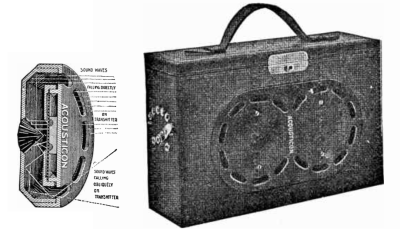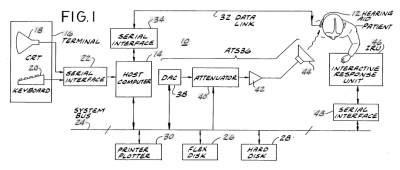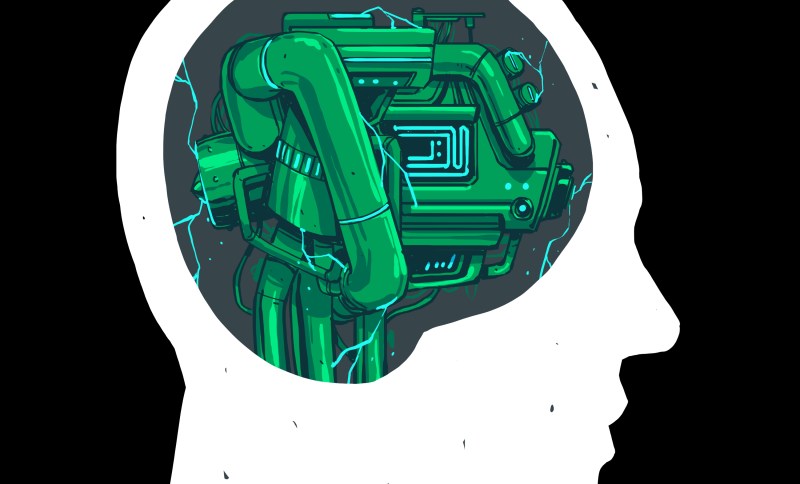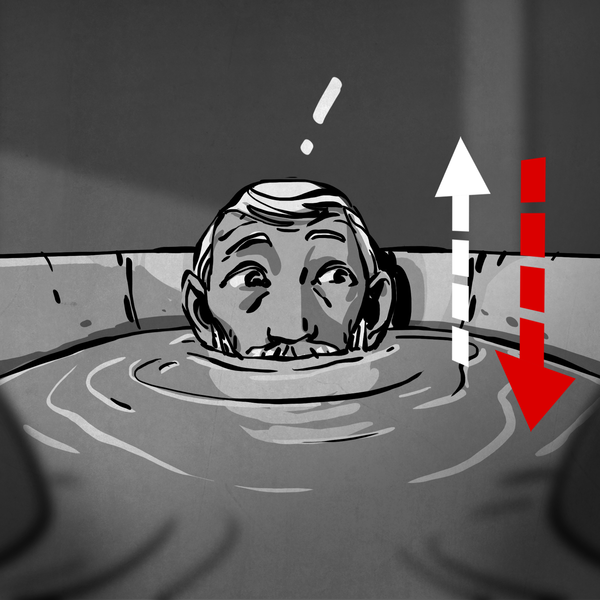You might think you don’t need a hearing aid, and you might be right. But in general, hearing loss eventually comes to all of us. In fact, you progressively lose hearing every year, which is why kids can have high-pitched ringtones their parents can’t hear.
You’d think hearing aids would be pretty simple, right? After all, we know how to pick up sounds, amplify them, and play them back. But there’s a lot more to it. Hearing aids need to be small, comfortable, have great battery life, and cram a microphone and speaker into a small area. That also can lead to problems with feedback, which can be very uncomfortable for the user. In addition, they need to handle very soft and loud sounds and accommodate devices like telephones.
Although early hearing aids just made sound louder and, possibly, blocked unwanted sound, modern devices will try to increase volume only in certain bands where the user has hearing loss. They may also employ sophisticated methods to block or reduce noise.
A Brief History
Hearing loss is nothing new. Ear trumpets appeared around the 17th century. These were just simple sound baffles that directed sound to your ear and, perhaps, cut some noise out that wasn’t in the trumpet’s direction.
The modern hearing aid dates back to the akouphone in 1895. [Miller Hutchison] developed the device for a friend who was deaf from a bout of scarlet fever. It was bulky — sitting on a table top — and used a carbon microphone, but it did work. He was also able to sell several models to royalty, many of whom suffered from hereditary deafness. This included Denmark’s Queen Alexandra, who, reportedly, was very impressed with the results.

Around 1902, [Hutchison] changed the device’s name to the acousticon, making it more portable with battery power. Despite impressive marketing, not all medical professionals were sold. If you were totally deaf, the device did nothing, unsurprisingly. In addition, the bulky batteries required frequent replacement, and the frequency response was poor.
It was still better than nothing, and the invention also led to the massacon and akoulalion that converted sound into vibration for the profoundly deaf. He later sold the rights for the acousticon to [Kelley Turner], who would not only improve the device, but also use the technology to launch the dictograph, which was a well-known office machine for many years.
Modern Times

Keep in mind that portable hearing aids in the 1920s was a relative term. Typically, you’d have a unit carried in a bag or hung around your neck. World War II brought advances in minaturization which benefited hearing aids like the Zenith Miniature 75.
Transistors, of course, changed everything, including hearing aids. The Sonotone 1010, which appeared in 1952, used both transistors and tubes. Early transistor units were known to fail early due to moisture and heat. Silicon transistors and encapsulation helped.
Naturally, all of these hearing aids were analog as were the earliest IC-based devices. However, with the advent of ICs, it was possible to use digital techniques.

The path to digital hearing aids was difficult. In the 1970s, large computers could program digital elements in hearing aids to tune the device to set frequency bands and gains.
By 1980, several groups were experimenting with real digital hearing aids, although many of them had wireless links to real computers. A fully digital hearing aid first appeared in a 1984 patent, but it wasn’t tiny. Since then, things have gotten smaller and more capable.
Physical Form
Hearing aids went from table-top devices, to boxes hanging on necks. Getting smaller devices allowed for small boxes that hug the back of the ear with the earpiece into the ear canal.
With even smaller devices, the entire apparatus can be placed in the ear canal. Many of these go so deeply into the ear that they are largely invisible. There are also hearing aids that can surgically attach to your skull using a titanium post embedded in the bone. This can transmit sound even to people who can’t hear sound directly since it relies on bone conduction.
Other places to find hearing aids are built into thick glasses frames. Doctors with hearing problems can opt for stethoscopes with integrated hearing aids.
Modern hearing aids sometimes have rechargeable batteries. Otherwise, there will be some kind of small battery. There was a time that mercury cells were common, but with those banned in most places, many aids now take zinc-air batteries that deliver about 1.4 V.
We hear from an 8th grader that you can make hearing aid batteries last longer by peeling the sticker from them and waiting five minutes before installing them. Apparently, giving them a little time to mix with the air helps them.
What’s Next?
On the market today are hearing aids that use neural networks, have Bluetooth connections, and use other high tech tricks. We’ve looked at the insides of a hearing aid and why they cost so much before. If you want to roll your own, there is an open source design.
















British comedian Eric Sykes often appeared on TV and in films wearing glasses with no lenses – that’s because he became profoundly deaf as an adult and his glasses fames contained an early bone-conducting hearing aid.
Fun story and not questioning its truth, but just want to mention that a lot of people on TV wear glasses with no lenses. Glare.
If you go to 2:21 on https://www.facebook.com/BBCArchive/videos/1994-eric-sykes-pebble-mill/1252764875614607/ you can watch the (comically delivered) Eric Sykes explanation from a 1994 interview on the BBC Pebble Mill program.
They were his trademark almost as much as the Two Ronnies whose into featured a graphic of two pairs of glasses.
I’m not sure but I think he might also have coined the gag where he pretends to be cleaning his glasses then passes the cloth right through the frame where the lens should be, he was a master of comedy especially slapstick so it would absolutely fit.
Another innovation to modern hearing aids is frequency spectrum compression. When a patient has lost either high frequency or low frequency perception the range they have lost is combined with a segment of their remaining perceivable range and then compressed so the entirety of the resulting waveform falls within the patients hearing range.
That’s really cool! I never knew this
Sorry if my words were unclear. Not all modern hearing aids can/do this. I should have made it clear that its a treatment modality some newer digital processors allow for specific forms of hearing loss.
I wonder if it could be done all analog. Seems like it would sound a bit like single-sideband tuned off frequency a little.
Yes. That was my first HA design, many years ago. But did not work around any appreciable ambient noise.
Next design was based on PJRC’s Teensy 3. Got another hearing test, then did another desing using the Teensy 3.6, which I still use. The PJRC audio libraries, plus a little analog signal conditioning, made it a relatively easy design and implementation. The difficult part was finding decent microphones and ear speakers.
The only thing that you cannot reliably DIY is your personal audiometry tests. The online stuff is not useful quantitatively, but is a qualitative measure of your freq response.
The down-side? I can clearly hear my wife. Every last word.
That’s very interesting but wouldn’t the frequency compression cause the sound to “sound” different? Does the patient have a learning curve to use this type of hearing aid or what?
yes the sound does sound different
I am most familiar with this being used in reverse slope hearing loss, or low frequency hearing loss. Frequencies below 2000 hz, mens voices, bass notes, and natural or mechanical rumbling sounds. Hearing these sounds shifted to the 2000-2500hz range is better than not hearing them at all. There isnt really an adjustment, your brain doesnt learn to hear these with the original deepness. I guess the learning is to not laugh at burly men sounding like theyve been huffing helium.
Not a learning curve per se, but it does take adjusting on some level. I had mine re-calibrated a couple times before i got fully comfortable with wearing it every day, and i do believe it was partially my brain adapting to being able to perceive these frequencies. Then if youre like me and used to only include one ear in your everyday “hearing” (i.e. intuitively turning your better ear to whoever is talking to you, for example) that kind of stuff also takes unlearning. :)) As another commenter said though its all much better than not hearing.
What happens when listening to music? Wouldn’t that cause dissonance? If so, could the original sounds be shifted into a harmonic?
Fun fact: early ceramic microphones used in hearing aids manufactured in Poland during 1980s were produced by the same company, which made infamous brown toilet bowls used in schools and at railway stations. Those bowls were made from brown phyanse ceramic because it didn’t require white enamel and didn’t have to be cleaned so often – the so called soviet “rationalization” policy.
soooo… ‘it’s not a skid mark if we get the contrast right’ was the design pitch?
I suspect it was more of ‘it isn’t rust’ (if your pipes are rusty and your tank is leaking a bit – you get white toilet bowl “rusty-colored” in surprisingly little amount of time.
When I read the title I was thinking about HIV and how it can be made audible.
Then I realized that this makes no sense and that “aids” is plural for aid. 😅
Sounds like you should get aides.
One sentence: NDA.
that would be an acronym not a sentence, in fact it doesnt even represent a sentence but rather merely a noun phrase
That would be an initialism, not acronym
One word: cryptic
I have two words for you: BRUSH YOUR TEETH!
There’s a lot of tech to nerd over in hearing aids. Specifically the “loop” radio transmission support for public venues, and it’s imminent replacement; Auracast (bluetooth LE broadcasts).
I’ve been experimenting with all the Auracast devices I can get my hands on, but it’s still very early. I’d love to find an open source project that uses something like an esp32 and a bluetooth 5.4 transmitter to create an Auracast relay for public venues. Eventually anyone with hearing aids will be prompted by their phones if they’d like to join a public broadcast when they enter an Airport or sporting event. Finally they’ll have digital audio quality and adoption will be higher than loop ever was, because most bluetooth 5.4+ devices will support it. Couple that with realtime AI translation and it’s going to make public events more accessible for everyone.
Or it will have advertisements ;-)
Considering that loop radio transmission is harder to set up
In the US, it was illegal to sell hearing ads to consumers without a doctor’s prescription until 2017.
After over-the-counter hearing aids became legal, prices quickly dropped from hundreds of dollars to tens of dollars.
In the early 70’s I had a stereo battery portable cassette and wanted to record live sound. I read up on binaural and spaced omni mics. I attached a pair of spaced cheapo mics to the heavy Koss phones kinda like martian antennae. Within the front hemisphere location of a voice was very good, it fell apart in the whole rear. The rear quadrant for us poor in life.
I had a close friend who was somewhat deaf from birth. I let him use the bulky but wearable setup where he could crank it up and balance it for his weak ear and he delighted at what he could hear in 3D. The tech of the time was out of reach and low fidelity. Oh! Nobody would wear headphones in public, so it didn’t mater. I listened to the Watergate hearings on my “walkman” whilst biking, and wanted to see a pocket stereo cassette player in ’71.
“In fact, you progressively lose hearing every year, which is why kids can have high-pitched ringtones their parents can’t hear.”
I’m sorry, could you type louder, I can’t hear you.
One of the true tragedies that anyone with a grandparent can tell you is that hearing decline and cognitive decline often go hand in hand. Denial of hearing loss is a real thing.
My dream is that inexpensive technology for hearing loss will be mainstream and accepted my those with even minor hearing loss early, before the cognitive decline really sets in. There is almost nothing worse or more exhausting than shouting at a family member that refuses to believe (simply cannot believe) they are deaf AF. And iffn’ you finally get them hearing aids they can’t tell the difference anyway because they are so cooked otherwise.
Thank you for a really interesting article. I have been wearing hearing aids for 6 years now and they have been life-transforming and also allowed me to keep working. Mine use bluetooth to connect to my phone and ipad, so I can use them for telephone calls, music, audiobooks, movies, etc. Crowded rooms are still a nightmare.
This from Apple.com which has also been reported in Australia newspapers, at least “The Age” and probably others.
Apple introduces AirPods 4 and the world’s first all-in-one hearing health experience with AirPods Pro 2
The new AirPods lineup includes a brand-new design for AirPods 4, a new array of colors for AirPods Max, and revolutionary Hearing Protection, Hearing Test, and Hearing Aid features for AirPods Pro 2
“Patent drawing from 1984 — Hardly portable” This is not the hearing aid but a setup for measuring the patient’s hearing parameters.
This is what happens when they have daily article quota to fill. Can’t produce enough quality content on time so they use JennyGPT.
The evolution of technology is awesome. But what hearing aids really need is cost reduction. There’s so many predators feasting off the handicapped. My Cochlear BAHA cost as much as a decent used car.
“We hear from an 8th grader that you can make hearing aid batteries last longer by peeling the sticker from them and waiting five minutes before installing them. Apparently, giving them a little time to mix with the air helps them.”
My pack of hearing batteries from Boots even includes this instruction on the package, but they only state one minute. I should try 5 minutes next time. Thanks to that curious 14 year old for this observation.
So, one 14yo makes one observation and claim, and that echoes around the world. Typical social mudia [sic]. Let’s try some critical thinking…
The air will enter whether or not the cell is installed – so what’s the physics/chemistry that would support the observation and claim?
What is the control group? Battery capacity varies between brands and over age, so what evidence is there that isn’t a sufficient cause of the observation and claim?
It’s possible that drawing current from the battery immediately after it is exposed to air reduces the capacity. We need a controlled study.
I have Jabra aids from Costco. They do help with mild loss, but focus on conversations and in restaurants is just plain hype. The hardware is compact with long battery life. The software sucks – randomly drops streaming, nagware, must wait several seconds to connect and do anything, ineffective three point equalizer, no compressor to lower peaks and boost low volume sounds.